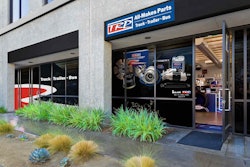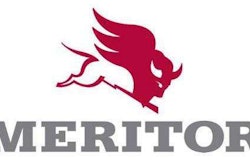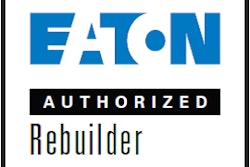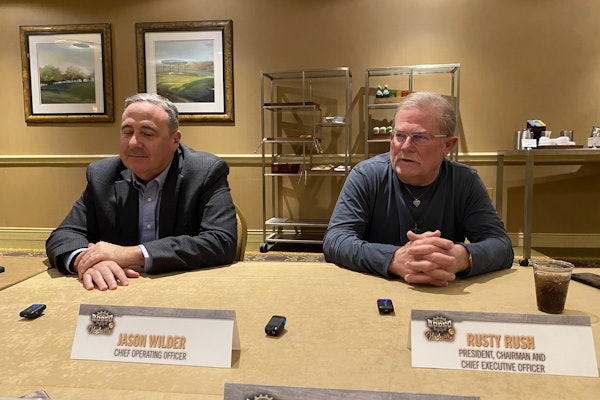White box, offshore manufacture, e-based distribution, Internet customer service, virtual-reality based training. It’s easy to see why we’re heading towards trust in a process … a brandless trust. Good-Better-Best Brand? Why?
By Bill Wade, Edward Kuo and Steven Lerner, Wade & Partners
If you think about a supply chain that’s obsessed with finding a more efficient way of doing things, you can see why we have a system that’s always adding finer handovers in between the beginning and the end points. And why there’s decreasing visibility into what’s really going on.
As with most new and inherently disruptive technologies, it is far too early to appreciate the full potential of technologies like Blockchain in the heavy-duty parts and service space. It is human creativity from thousands that will drive innovative, successful applications. In a certain sense, it endeavors to replace those same humans.
It’s hard to imagine that Blockchain technology will ever be able to live up to its grandiose billing. It has been touted as the solution to product tech transparency, channel financial instability, personnel/driver data security and many of the other problems of the modern market.
Briefly, Blockchain is a series of connected “blocks” of data containing records of transactions, the most well-promoted type in use at present being Bitcoin. These interconnected blocks form a “chain” of data that is effectively a database that is decentralized and fully distributed. The visibility is limited to participants in those specific transactions.
A leading consultant in this area of tech, Forrester Research says, it’s a “technology concept or architectural principle that can be — and has been — realized in many ways,” such as distributed ledger technology, mutual distributed ledgers or other Blockchain-inspired solutions. Really advanced record keeping.
What’s really fascinating to us about the promise of Blockchain is the shared ledger of tracking products through the supply chain. A great fleet example: the cold chain. Temperature of product can now be monitored as it moves through the supply chain and a shared ledger can assist everyone in ensuring that product maintained the correct temperature throughout (plant, container, truck or rail, store) worldwide.
What we’re witnessing isn’t an accident of overhype, it’s an unavoidable consequence of our desire for cheaper, better and faster. If you can turn one link of the chain into two sub-links and bring an economy in here or there, you’ve ‘improved’ the system. (Sure, you’ve opened it up to new risks, but that will be someone else’s problem, higher up the chain).
Beyond DNA. Maximum Efficiency, Minimum Visibility
Heavy-duty industry veteran Edward Kuo points out the initial difficulty in getting your brain around this. “At the outset, people see block chain as some mysterious technology that fuels crypto-currencies like Bitcoin.”
“However, there are potentially a few use cases that would affect our industry. Just think of areas where unorganized clumps of data are being relied upon for critical processes. Blockchain technologies can help unify and validate the data on a trackable, secure platform, and make it editable or viewable only by those who are verified stakeholders.”
Security increase? Certainly. Absolutely fool proof? Hardly. My colleague Steve Lerner found a great example: It was discovered that there were 66 million bottles of wine fraudulently based on Rhone wine with 1.3 million bottles claiming to be the famous Chateau Neuf du Pape label, a $100 million scam.
What about when it comes to truck parts? There has always been plenty of opportunity for supply chain fraud issues, with even more dangerous consequences such as unknown substitution of friction material, engine oil additives or sub-standard wiring.
What if you can’t check the DNA of some product? After all, neither coolant/anti-freeze nor friction pucks have DNA we can look at, so how can you check their credentials? And besides, DNA testing is expensive so you don’t always want to make it part of the process.
The idea behind Blockchain is that you create a digital record that’s inseparably connected to the product going through the chain. That digital record is tied to the real-world product and because it uses cryptography, it’s inviolable. Also known as DLT, or distributed ledger technology, it is THE technology that helps Bitcoin work.
Perhaps the easiest way to think about it is like a digital version of the packing slip that accompanies a parts shipment, only more reliable. Those packing slips used to be printed on paper and could be modified in nefarious ways. Today someone can still turn up at a warehouse with a fake set of documentation, a large truck and steal a ton of product.
Even the computer records that generate the printed documents can be modified, which is how many forms of supply chain fraud happen today. But with Blockchain records, you can’t change anything without it showing up as changed or corrupted, and that is extremely useful. The sheer cryptographic strength of each record means that any attempt to change a record will result in a flag coming up as a hacking attempt.
How Blockchain Could Transform Our Business
Anchored to a distributed ledger algorithm that enables peer-to-peer transactions without a third party (such as a bank, or maybe a distributor) being involved, Blockchain is probably one of the most impactful breakthrough disruptions of recent years.
The financial services industry is already piloting applications for the new technology, but its potential to transform the commercial markets is only just starting to be explored.
Supply chains are such a complex enterprise, that it’s nearly impossible to solve any one problem without affecting another part of the chain. To illustrate this point, look at the supply chain of a heavy truck. The finished unit is pulling components from numerous supply chains, for items such as electronics, steel, oil, seats, from NAFTA, Europe or Asia.
Quickly they can cross-constrain each other. Ultimately, you’re not solving a local problem, you’re solving a global one. The problem for any entity within the supply chain is fundamentally created by limited information.
Other possible applications include price reporting, where Blockchain permits improved data verification while preserving external anonymity. Physical commodity tracing will be popular because it becomes possible to locate both physical commodity and its owner at any point in time.
There is potential for smart tendering:
- Pallets equipped with RFID tags can publish their need to move from point A to point B on a Blockchain ledger;
- Carriers can use Blockchain mining applications to place bids to win the job;
- The Blockchain will award the job to the bidder that best fits the requirements and the transaction is recorded on it;
- The shipment is then tracked on the Blockchain as it moves through the supply chain.
With Blockchain, all of these steps can be done automatically, cutting out cumbersome negotiations and inter-party information exchanges, and significantly improving efficiency.
As for preventing fraud, Forrester points out the obvious: If someone registers false ownership of a property into a Blockchain system, it’s still false, even if it’s visible to everyone and very difficult to change. By itself, Blockchain tech cannot ensure valid supply chain origins for products, any more than a brand can insure quality.
Similarly, the fact that all Blockchain transactions are available for every participant to see seems like a huge advantage at the moment, when fake news and ad fraud makes transparency a highly desirable asset. In reality, radical transparency of every transaction could have negative consequences, like diminishing competitive advantages or (Gasp!) promoting price fixing.
Alas, the highly touted ‘smart contracts’ are neither smart, nor are they contracts in the real sense. In fact, they are “business process automation,” which certainly doesn’t sound as sexy. They will not replace actual contracts, but if they could, and were not carefully controlled, they could result in unexpected consequences. Look at triggered-trading algorithms that have sometimes gone awry, such as the 2010 Flash Crash of the stock market.
Although Blockchain systems can facilitate value exchange between strangers, this isn’t the same as a “trustless” environment, since there is trust placed in the code. Governance models — including entirely new ones that could involve autonomous software — still need to obey existing laws and regulations, especially when financial institutions are involved.
Like other tech advances, Blockchain tech is about tradeoffs and it will continue to depend on changes in environments, such as regulatory frameworks. In the long run, Blockchain-like approaches could stimulate massive changes in how businesses and individuals collaborate for their own and their common interests, and in what form brands survive.
But whether they will. That remains to be seen.
Bill Wade is a partner at Wade & Partners and a heavy-duty aftermarket veteran. He is the author of Aftermarket Innovations. He can be reached at [email protected]. Note: Edward Kuo and Steven Lerner are new partners. Along with industry veterans like Lew Flowers and other Wade Partners, they are developing a common-sense plan to utilize Blockchain technology in the heavy-duty truck parts and service business.












